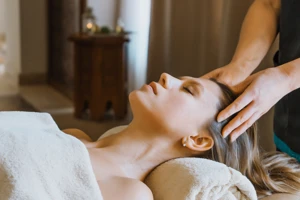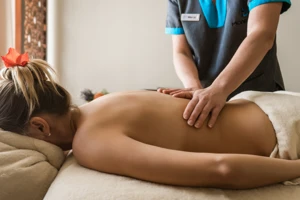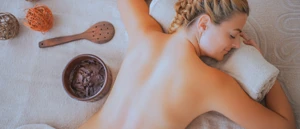__lg.webp)
Oriental Massage, also known as Asian or Eastern Massage, encompasses a variety of traditional massage techniques that have been practiced for centuries. This therapeutic practice focuses on balancing the body's energy, promoting relaxation, and enhancing overall well-being. techniques.
Needed items for oriental massage:
When it comes to performing an Oriental Massage, having the right items and tools can greatly enhance the experience for both the practitioner and the recipient. In this article, we will explore the essential items needed for Oriental Massage and how they can elevate the overall massage experience.
Massage Oil or Lotion: Massage oil or lotion is an essential item for Oriental Massage. It helps to reduce friction between the hands and the recipient's body. Choose a high-quality massage oil or lotion that is suitable for the recipient's skin type and preferences. Popular options include almond oil, coconut oil, grapeseed oil, and unscented massage lotions.
Clean Towels or Sheets: Clean towels or sheets are necessary to cover the massage surface and ensure hygiene during the session. Place a fresh towel or sheet on the massage table or mat before the recipient lies down. Additionally, have extra towels nearby to cover and keep the recipient warm during the massage.
Comfortable Massage Surface: A comfortable massage surface is essential for providing a relaxing experience during Oriental Massage. Depending on your setup and preference, you can use a massage table, a padded mat on the floor, or a comfortable bed with adequate support. Ensure that the surface is clean, stable, and cushioned for optimal comfort.
Candles: Adding candles to your Oriental Massage session can enhance relaxation and create a soothing ambiance. Consider using scented candles to fill the room with pleasant fragrances. Lavender, chamomile, and ylang-ylang are popular choices known for their calming properties.
Music or Ambient Sounds: Creating a serene atmosphere is important during Oriental Massage. Consider playing soft, calming music or ambient sounds to help create a peaceful environment for the recipient. Choose music that promotes relaxation and complements the overall experience.
Oriental Massage steps:
In the upcoming lines, we will guide you through a step-by-step process to perform Oriental Massage
Step 1: Prepare the Environment
Create a peaceful and comfortable environment for the massage. Choose a quiet room with soft lighting, soothing music, and a comfortable massage surface such as a massage table or mat. Ensure that the room is warm enough to promote relaxation.
Step 2: Warm-Up and Relaxation
Begin by inviting the recipient to lie down on their back and take a few deep breaths to relax. Perform gentle stretching exercises on the recipient's limbs to warm up the muscles and prepare the body for the massage.
Step 3: Effleurage Strokes
Start with effleurage strokes, which are long, gliding strokes using your palms and fingertips. Apply gentle pressure and stroke along the body's major muscle groups, such as the back, shoulders, arms, and legs. This technique helps to warm up the tissues and relax the recipient.
Step 4: Petrissage Techniques
Next, move on to petrissage techniques, which involve kneading and squeezing motions. Use your hands, thumbs, and fingers to apply deeper pressure and work on specific areas of tension or knots. Focus on the back, shoulders, and neck where tension commonly accumulates.
Step 5: Acupressure Points
Incorporate acupressure points into the massage by applying firm pressure to specific points along the body's meridian lines. These points correspond to different organs and systems in the body. You can use your thumbs or fingertips to apply pressure in a circular or pulsating motion. Consult an acupressure chart or seek guidance from a trained practitioner to locate these points accurately.
Step 6: Stretching Techniques
Integrate stretching techniques into the Oriental Massage routine to further release tension and improve flexibility. Gently stretch the recipient's limbs, focusing on major muscle groups such as the arms, legs, and neck. Use smooth and controlled movements, ensuring that the recipient is comfortable throughout.
Step 7: Joint Mobilization
Perform joint mobilization techniques to improve range of motion and joint flexibility. Use gentle movements to rotate or stretch the joints in a controlled manner. Pay attention to areas such as the wrists, ankles, shoulders, and hips.
Step 8: Closing the Session
Gradually conclude the Oriental Massage session by transitioning from deep pressure techniques to lighter strokes. Use effleurage strokes once again to gently glide over the recipient's body, promoting a sense of relaxation and closure. Allow the recipient a few moments of rest before slowly helping them sit up.
By following this step-by-step tutorial, you can learn how to perform Oriental Massage techniques effectively. Remember to always prioritize the comfort and safety of the recipient throughout the session. With practice and proper technique, you can provide a rejuvenating Oriental Massage experience for yourself or others.

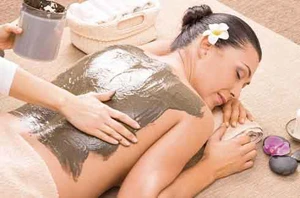
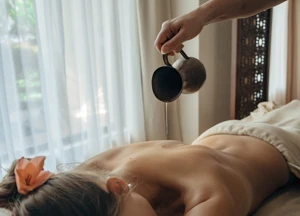
__thumb.webp)
